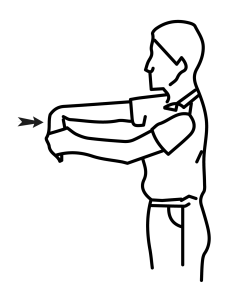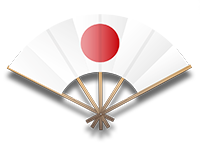Tennis Elbow
What is it?
The lateral epicondyle is the origin for the extensor muscles of the wrist and fingers. This is located on the outer part of your forearm. These muscles are important for gripping, movement of the fingers and even typing. When the muscles become inflamed, or are strained, they pull strongly on the membrane which covers the bone, known as periosteum. It is this membrane which becomes very irritated and causes sharp pain and/or weakness.  Lateral epicondylitis is more commonly known as ‘tennis elbow’ (although you don’t have to play tennis to get it!). It is not uncommon for individuals who are suffering from acute lateral epicondylitis to drop cups and pans and be unable to open drink bottle tops.
What is the cause of it?
This disorder is caused by over use or a strain, and prolonged tight gripping of objects such as hammers and screw drivers, or by weight lifting or digging in the garden. This can occur in Kendo and Iaido from gripping the Shinai/bokken or Iaito too tightly, straining the muscle. It can also be caused through repetitive actions such as typing, so it can also be a “repetitive strain injury”. Many people do many different activities, so discovering whether the injury is work related or hobby related is often difficult.
How does it feel?
Initially the elbow will feel sore after activity. If left untreated the pain will rapidly re-occur during activities and after the activity has finished. The pain may begin to travel down the back of the forearm and some swelling may also be observed. The condition can progress further still, leading to pain and difficulty doing simple tasks such as shaking hands, turning the doorknob and holding a cup. In some instances there will be a complete lack of pain in the forearm, but instead there will be pain on the back of the fingers. The pain in the fingers is usually a dull ache whereas pain in the forearm is sharp pain which some describe as a burning sensation.
What you should do?
RICE (Rest, Ice, Compression and Elevation) treatment. Rest requires you to stop activity that flares up the injury, and limiting the amount of gripping you do on that arm. Ice should be applied at the site of injury for 15–20 minutes every few hours. This will help limit the amount of haemorrhaging and swelling. Compression involves the application of a firm elastic bandage around your elbow. It should be firm, but not cause pain. Elevation involves you lifting your elbow above the level of your heart.
You should continue the RICE regime until you consult your Osteopath/Physiotherapist, preferably the sooner the better. They will then treat you so you make a fuller recovery sooner and give advice on how badly you are injured and how long to stay off activity. Lateral epicondylitis can sometimes be a very stubborn injury to shift, with some people taking up to one year to attain full rehabilitation and in extreme cases an injection or surgery may be required. They may also recommend various elbow supports that help with the treatment of lateral epicondylitis.
What shouldn’t you do?
You should try and isolate the extrinsic factors in your life that cause the pain to flare up and try to avoid participating in them.
Could there be any long term effects?
If left untreated, the muscles of the forearm can weaken and there may be noticeable muscle wasting (muscle atrophy).
What can you do to avoid it?
Obviously performing your techniques correctly is the long term solution to the problem but, as mentioned before, there may also extrinsic factors that would need to be resolved. A thorough warm-up will help and given that you will be gripping a shinai/bokken, iaito or Jo, stretching of the forearm is a must.

- Hold the wrist as shown
- Bend the wrist until you feel a stretch
- Hold for 30 seconds
- Repeat 5 times for each elbow
Article by: Narendra Arjan BSc (Hons) Ost Med, DO, ND, PGDip Animal Osteopathy
(BKA Kendo Squad Osteopath)
http://www.pegasusclinics.com
